Notes
Alan Chin on the Tunisia-Libya Border: Chaos (Controlled?)
Stamped passports are tossed back to Egyptian guest-workers who evacuated from Libya, many with harrowing tales of robbery and intimidation at multiple checkpoints on the road. Tens of thousands have come across the land border, and the Tunisians are overwhelmed. Most of these men (and they are all men) are young and healthy, being workers for multinational and Libyan companies. Food, water, and basic first aid are available, but not much else. Thousands sleep on the open ground or in a few Tunisian army tents, until they can crowd on board a bus to the next transit camp.
Many evacuees feel great frustration and celebration at the same time: several thousand held a protest, waving Egyptian and Tunisian flags. They proclaimed pan-Arab Tunisian and Egyptian unity, thankful to have escaped Qaddafi’s violence and proud of the revolutions that have swept both countries. But they are angry at their own ambassador in Tunis — at the Egyptian government — for not doing more to succor them in their hour of need. With such large numbers and Egypt’s relative poverty and disorganization, it’s clear that neither Tunisia nor Egypt have the resources to handle this influx. The UNHCR and other relief organizations have yet to be seen.
The blue gate marks the very limit of Tunisia. Beyond that is the narrow strip of “no man’s land” and then Libya. A handful of Tunisian soldiers struggled to control the rush. Tunisian men and boys added to the confusion by yelling at the Egyptians and telling them to slow down and be orderly.
Citizens of European countries, of China, Thailand, and other more developed nations don’t have to go through this. Representatives of their embassies guide them to comfortable buses, they are taken to hotels, their arrangements already in order. So as much as anything else, the mechanics of this exodus exemplify a dark face of globalization. Smaller numbers from richer societies are taken care of, while the masses of laborers from poor countries struggle to survive — and that is one of the fundamental reasons why this wave of revolt and revolution has swept across the region.
–Alan Chin
PHOTOGRAPHS by ALAN CHIN
You can see the archive of all the photo-reports from BagNews since the Middle East crisis began at Middle-East Uprising 2011.
Next post: This is what the revolution looks like
Previous post: Exodus
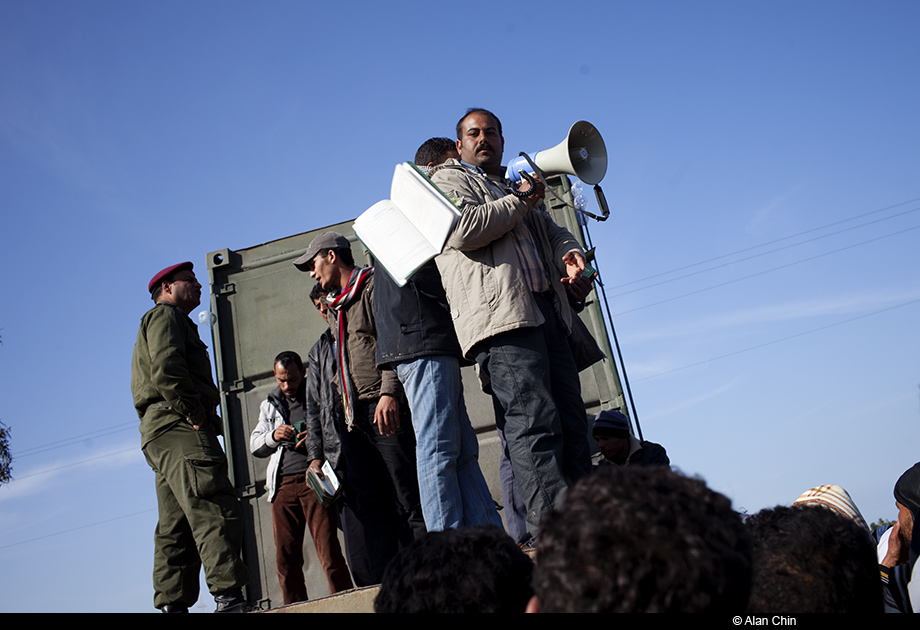
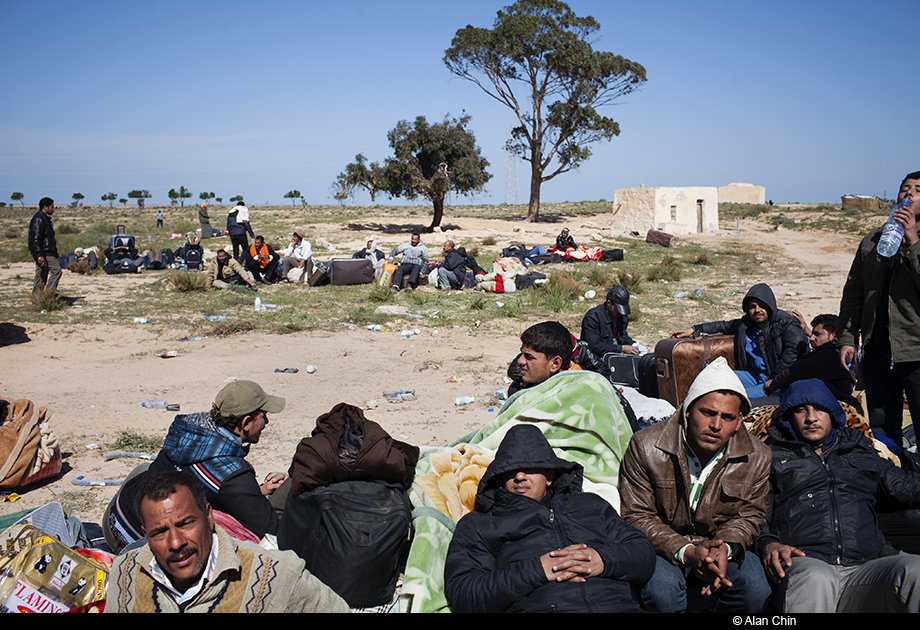
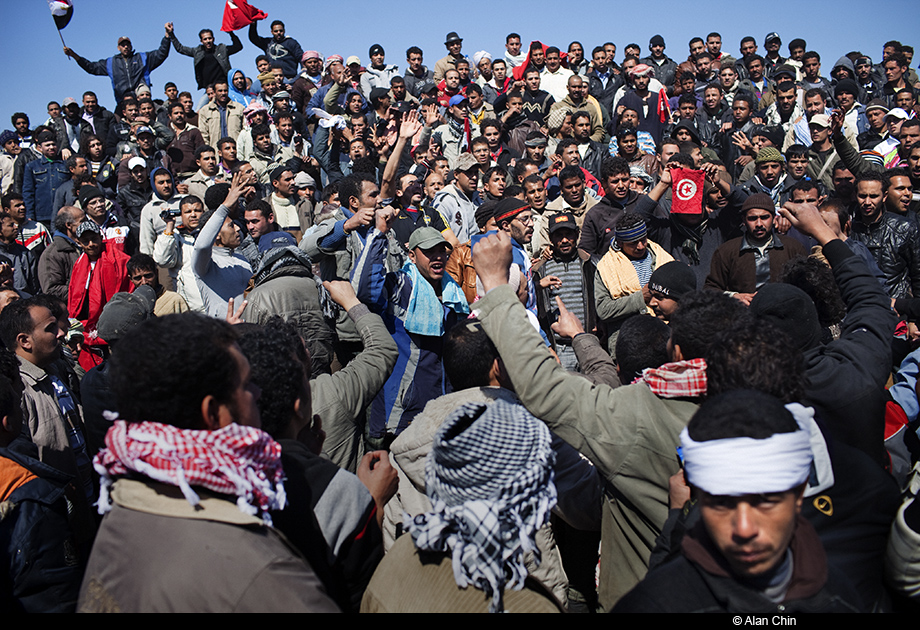
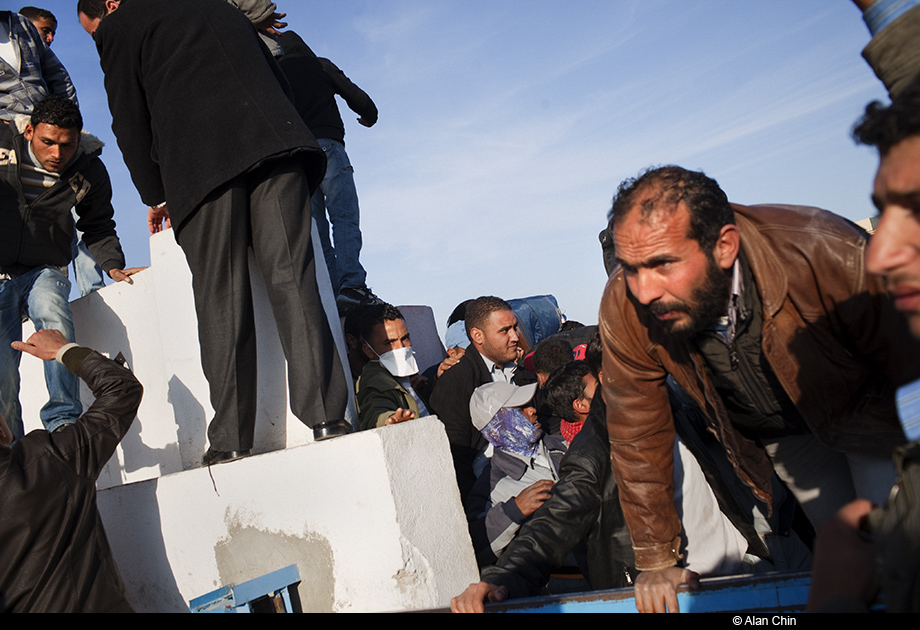
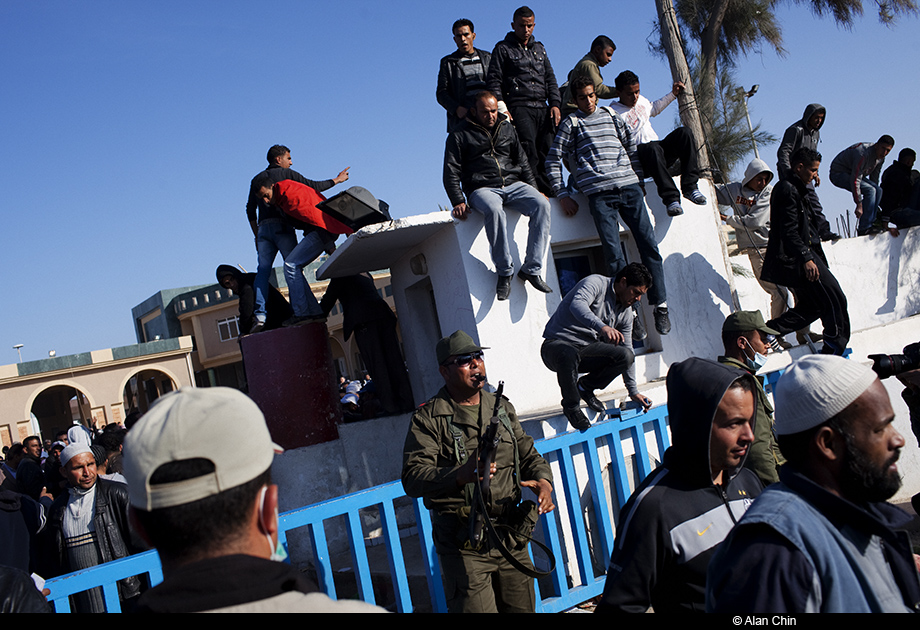
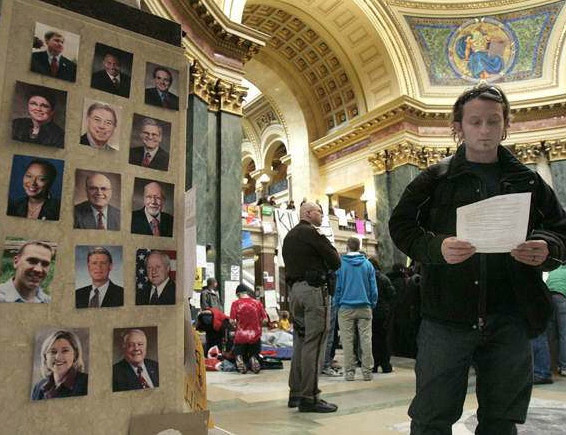
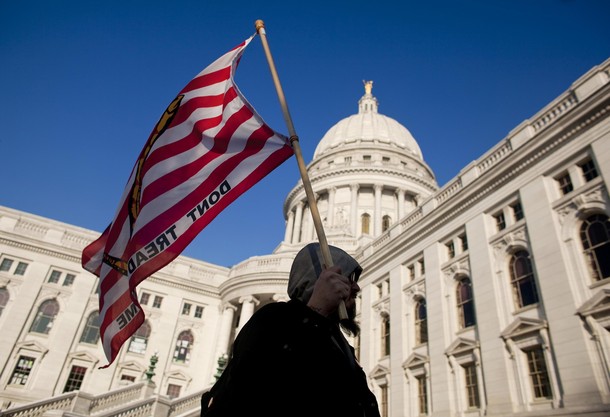
Reactions
Comments Powered by Disqus